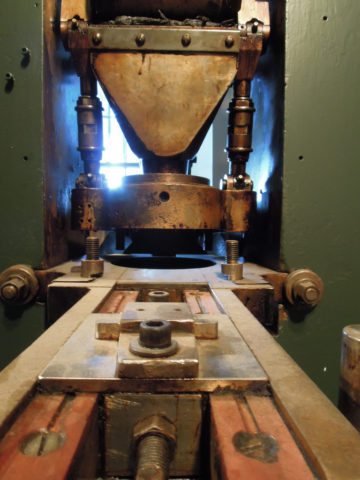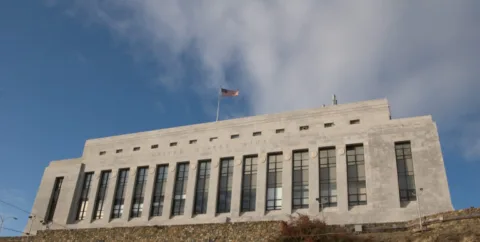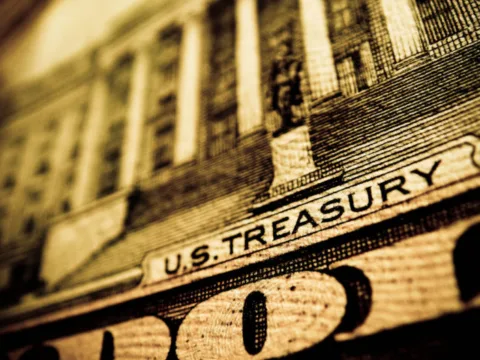You’ll probably want to check out our earlier article about the history of coins and coin collecting first.
Now, onto how U.S. coins have been made throughout the years…
How Early U.S. Coins Were Made
Today, they have large machinery at the U.S. Mint facilities that can produce millions of coins per day.
But what did they use before this technology came along?
Well, back in 800 BC they would have used the hammer method. A workman used a hammer to reduce the thickness of a sheet of metal — in which the blanks were then cut out by shears, then filed and hammered to reach the desired weight and thickness of the coin. The coin maker then carried out the so-called striking by putting a blank on the fixed die and holding the die above by hand. He then struck several blows with a hammer to finish the coin.
Sounds like a lot of work to make one coin huh? Now, think how long it would take to make several of them!
The First U.S. Coin Presses
 Later on, the first American coins made in the U.S. mint facilities were made by using screw presses.
Later on, the first American coins made in the U.S. mint facilities were made by using screw presses.
It took 3 men to operate a screw press — 2 on each end of a weighted iron bar and 1 seated in front of the press. (Animals were sometimes used to power the presses.)
The seated man would insert planchets and remove the finished coins. The 2 other men would tug on leather straps attached to the iron bar. The bar was attached to a heavy iron screw which drove an upper die down towards a lower one when the men on one side of the bar pulled it towards them. Then, when the men on the other side tugged on the bar, the screw and upper die were raised and the seated man would remove the finished coin.
Thi video shows coin die making then vs. now:
A good team of coiners could turn out several dozen small U.S. coins per minute. Not bad, but still not very fast.
Interestingly:
- The first U.S. President was elected in 1789.
- The United States government began minting coins in 1792.
- And the first circulating coins were produced in the U.S. in 1793.
The first coins struck are “half dimes” — believed to be made from silverware provided by George and Martha Washington. The first circulating coins are copper cents. Source
In March of 1836 a steam-powered coining press imported from France was put to work in the United States Mint. Power to turn the press was supplied by a belt from the steam engine. It had a capacity of 100 coins per minute.
When the more efficient coin presses finally came along in 1838, the old steam press was taken from its home at the mint and placed in a museum. The New Orleans Mint was opened.
See how coins were made by touring the New Orleans Mint Museum!
Modern Day U.S. Coin Presses
In early years, producing coins took a lot of time and was very hard work.
Today, the Philadelphia and Denver Mints use modernized machines perform a version of the same work done in 1792. They can produce more than 75 million coins in 24 hours almost effortlessly — now that’s a lot of coins!
Here’s a timeline of U.S. coin currency.
This video shows how U.S. pennies were made then vs. now:
The United States Mint currently operates 6 facilities across the United States with each facility performing unique functions.
The U.S. Mint facilities are located in:
- Washington, DC
- Philadelphia, PA
- West Point, NY
- Fort Knox, KY
- Denver, CO
- San Francisco, CA
Here’s how money gets into circulation after it leaves the U.S. Mint.
How Paper Money Is Made
The U.S. Mint only makes coins.
It is the U.S. Bureau of Engraving and Printing that is responsible for making paper currency.
Both agencies fall under the U.S. Dept of the Treasury.
Here’s a timeline of U.S. paper currency.
I have been collecting and trading coins for years. Coin collecting is a hobby for me, and I’ve done a lot of research about coins through the years.


